
Where We Be
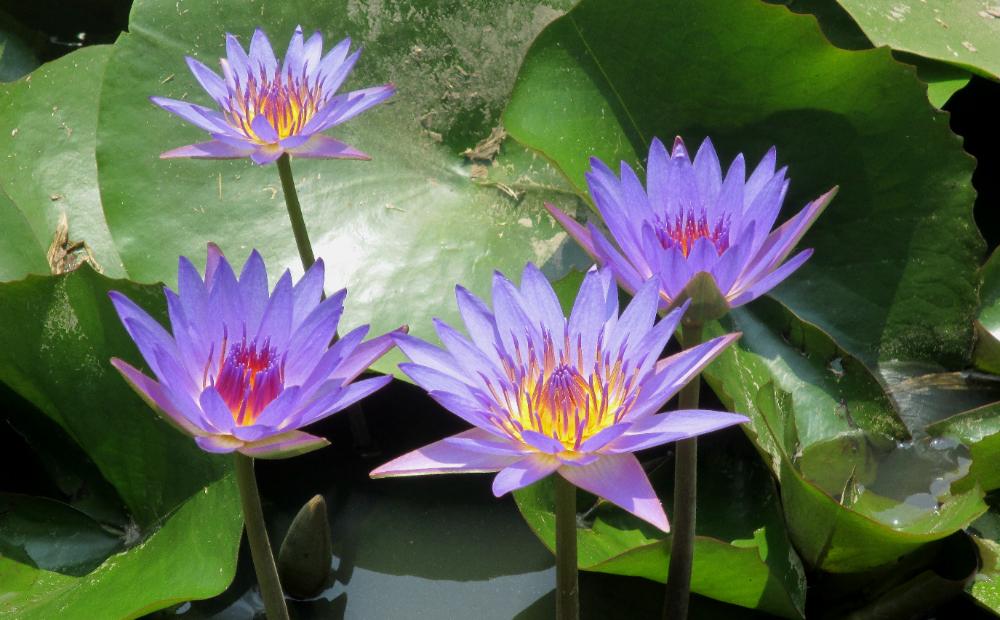
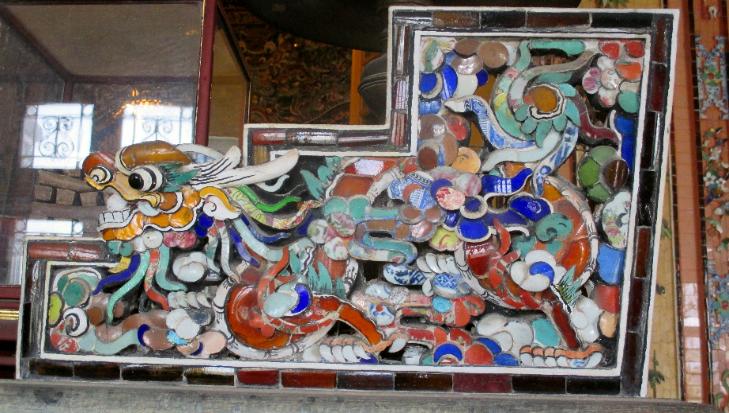
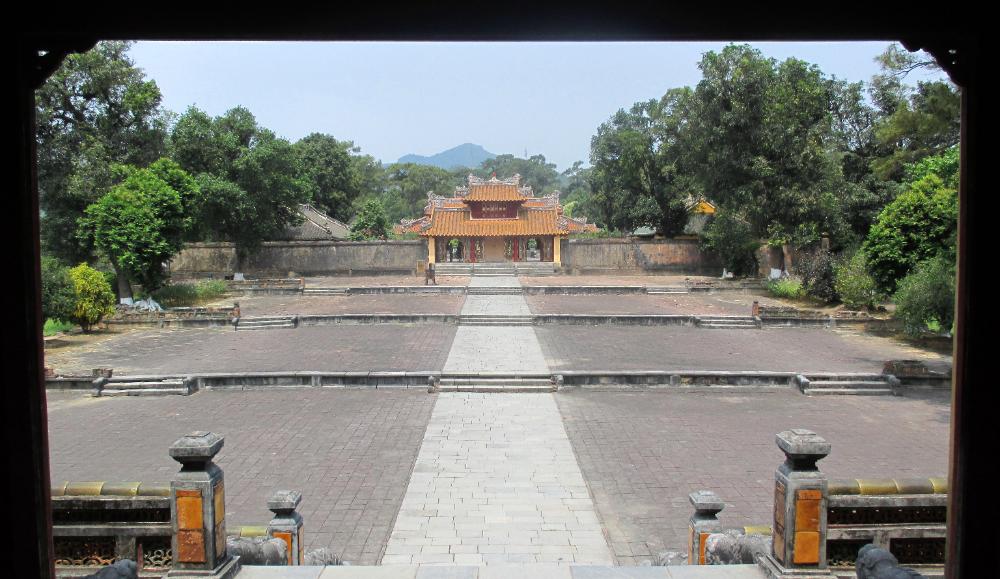
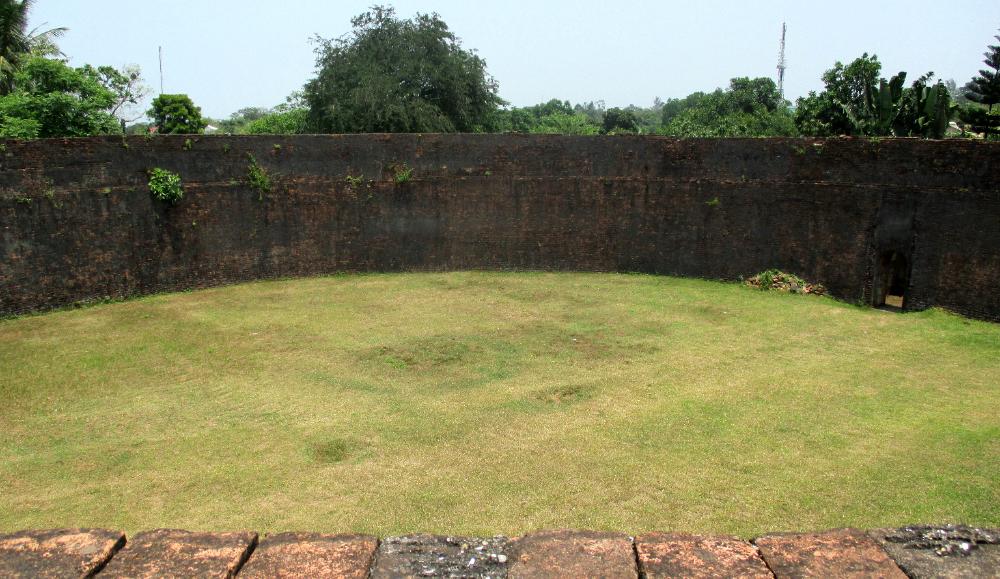
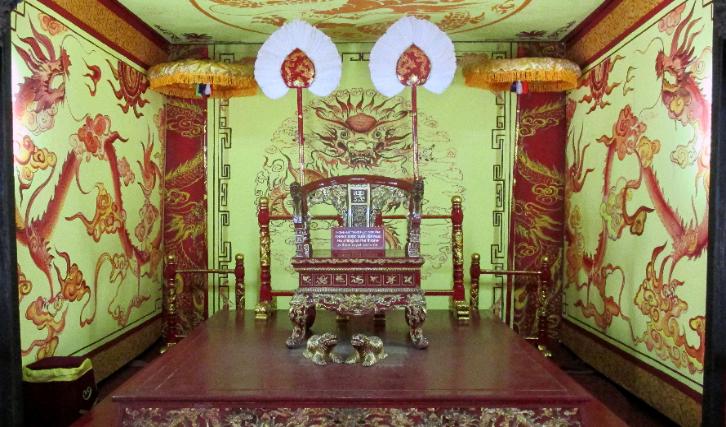
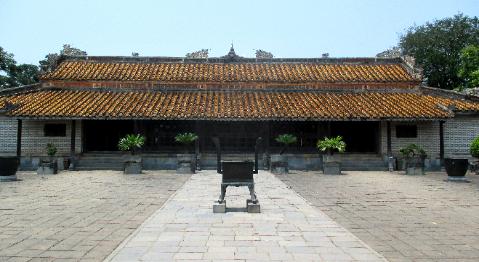
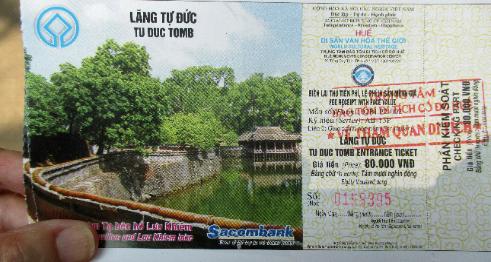
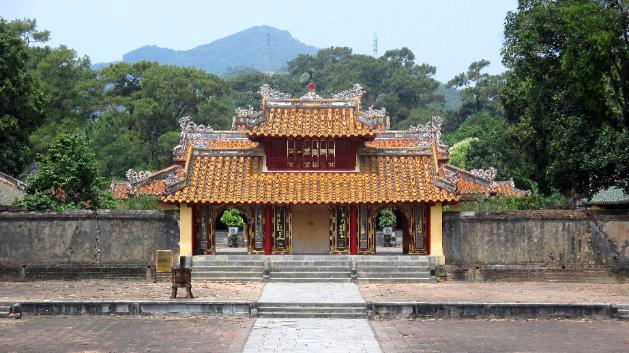
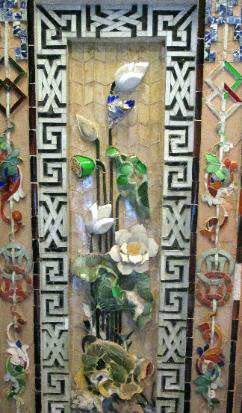
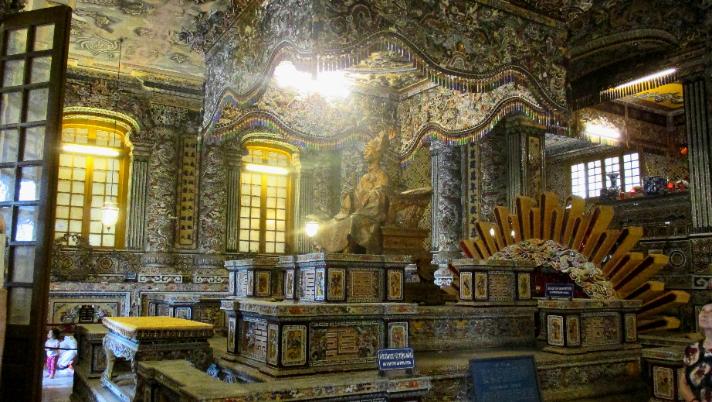
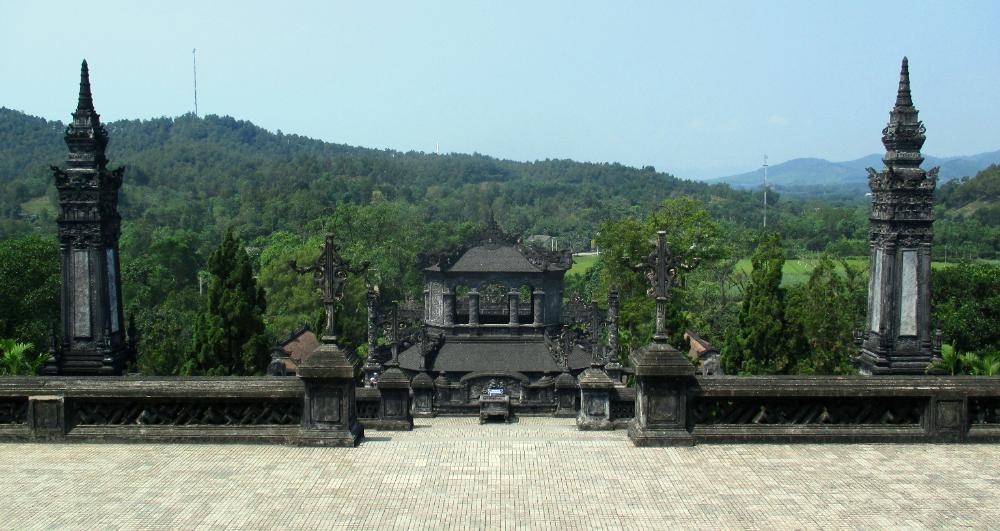
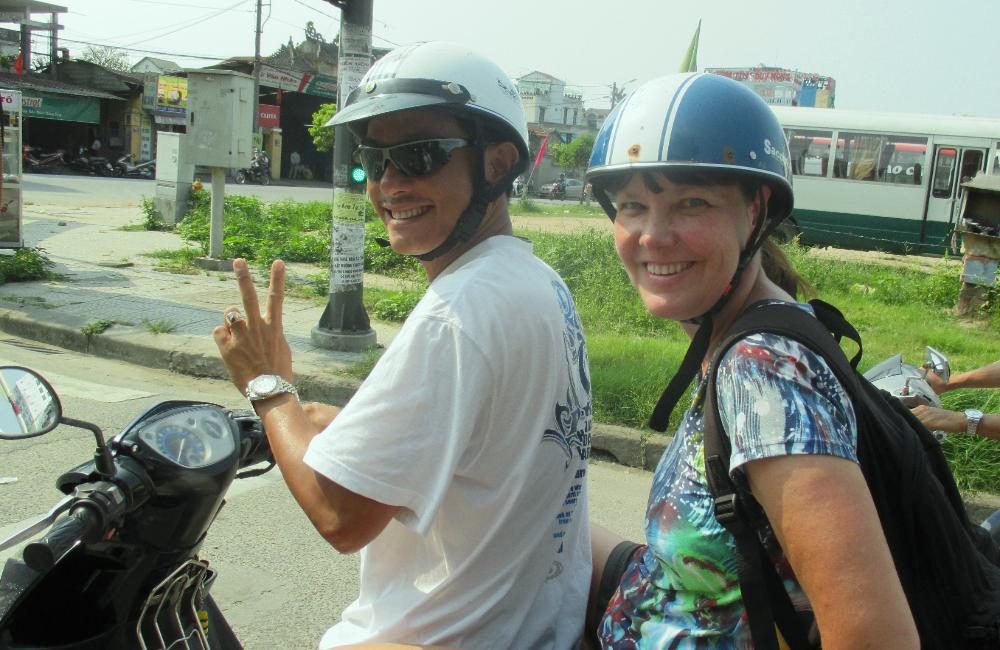
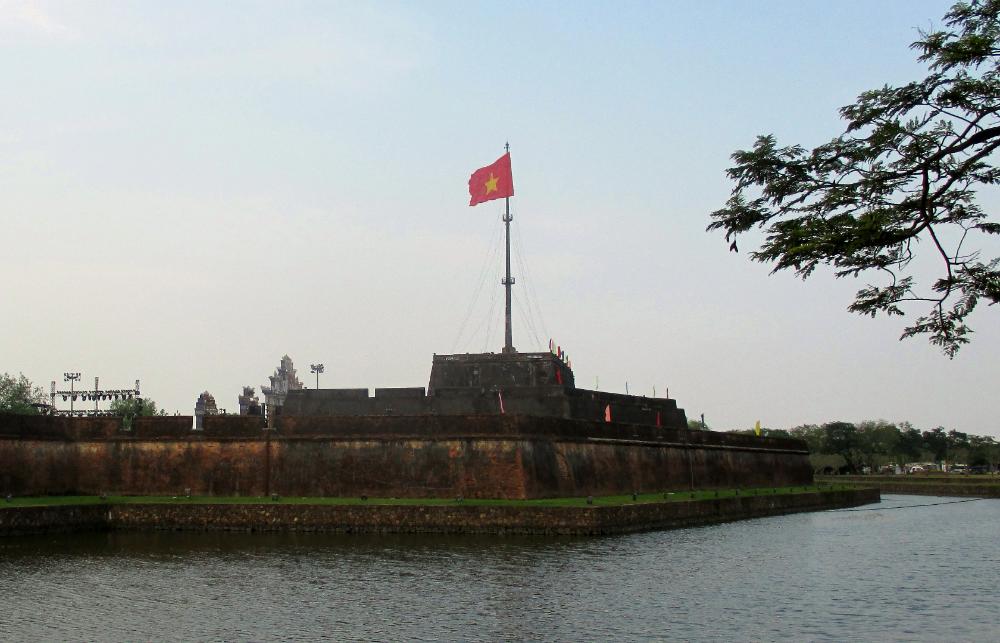
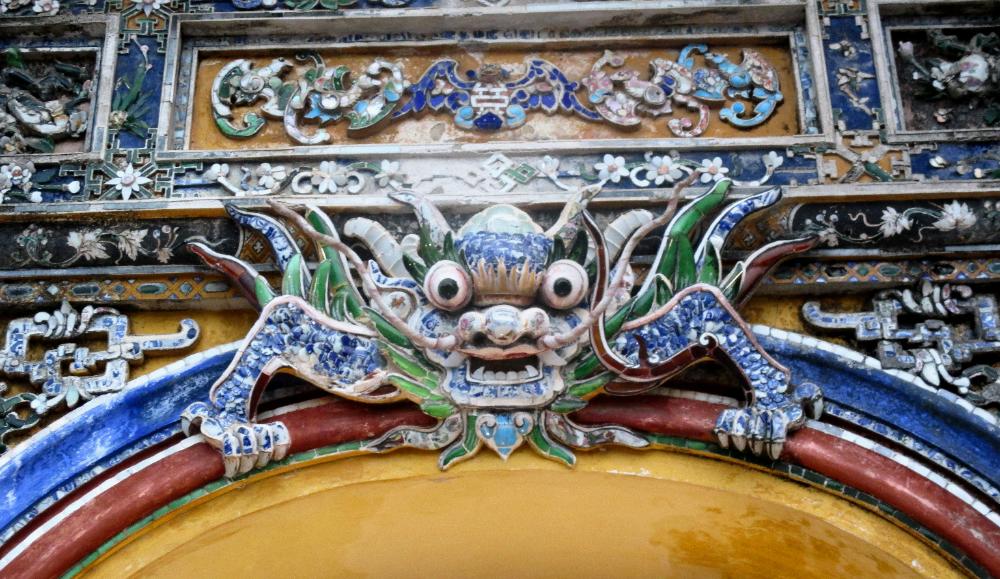
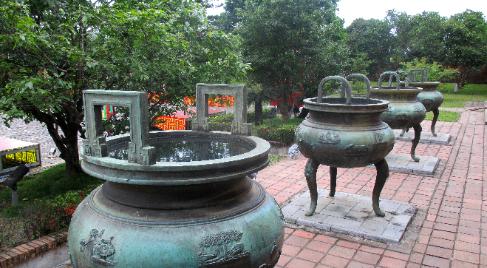
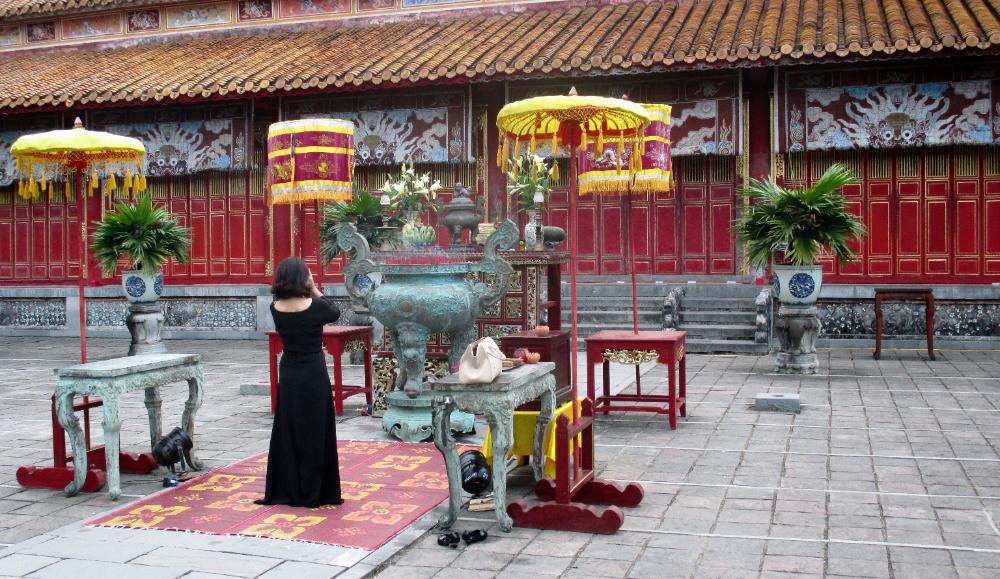
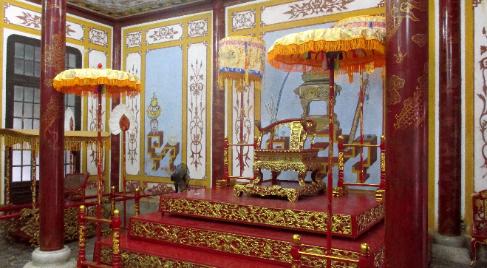
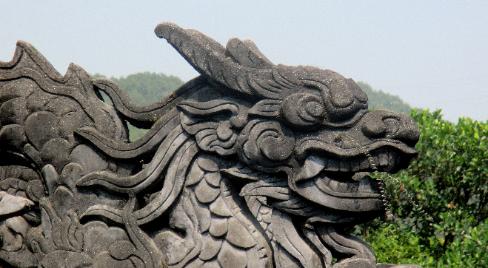
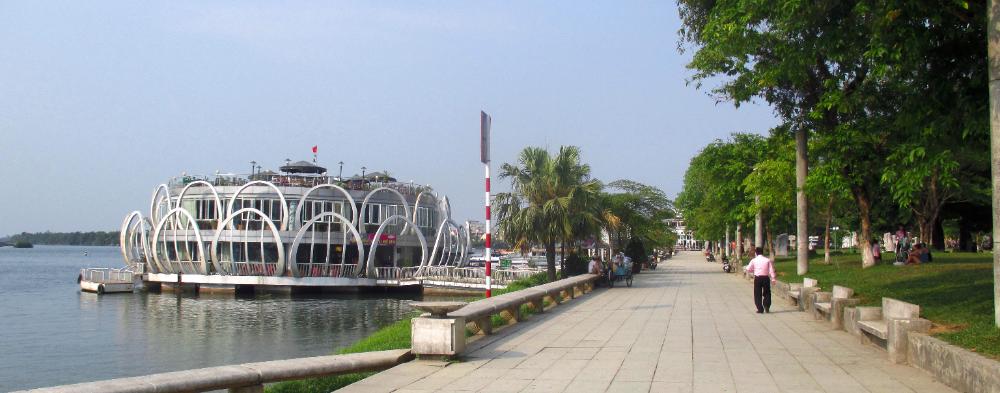
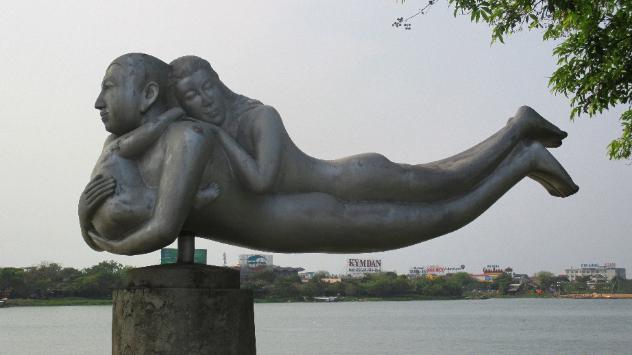
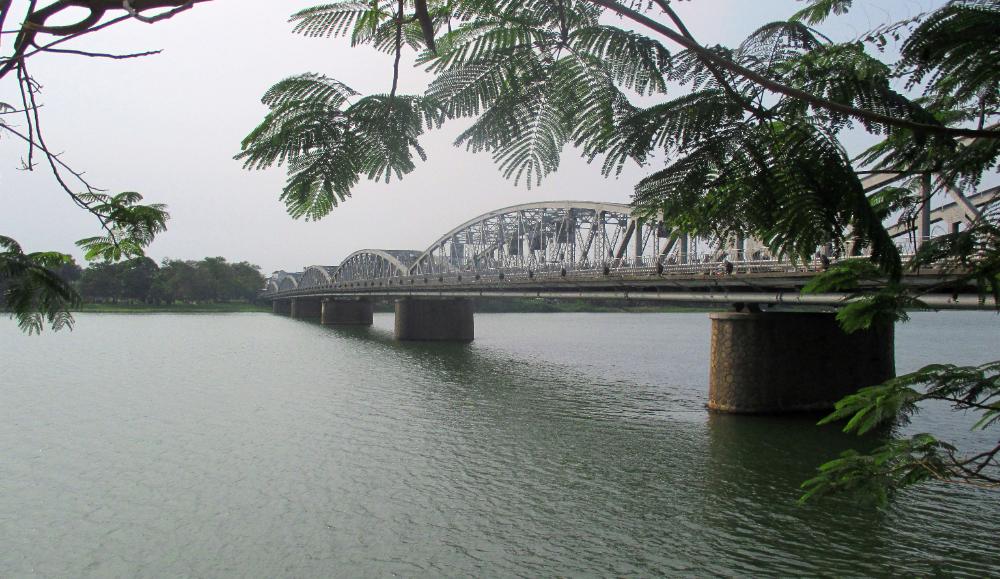
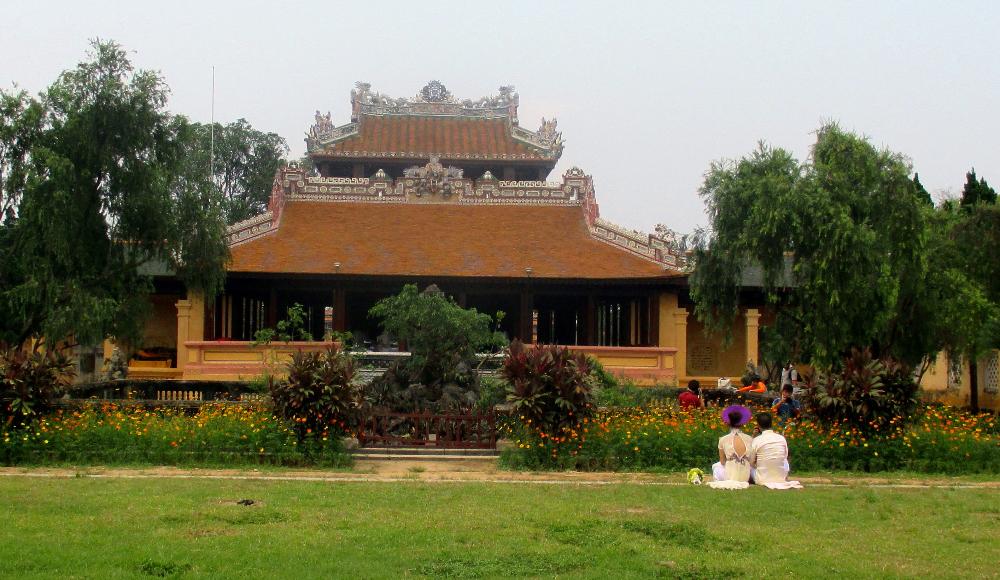
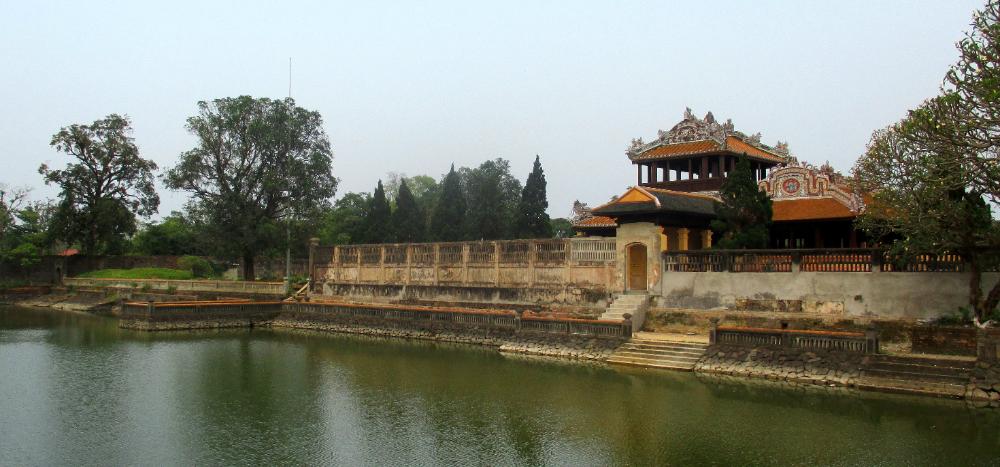
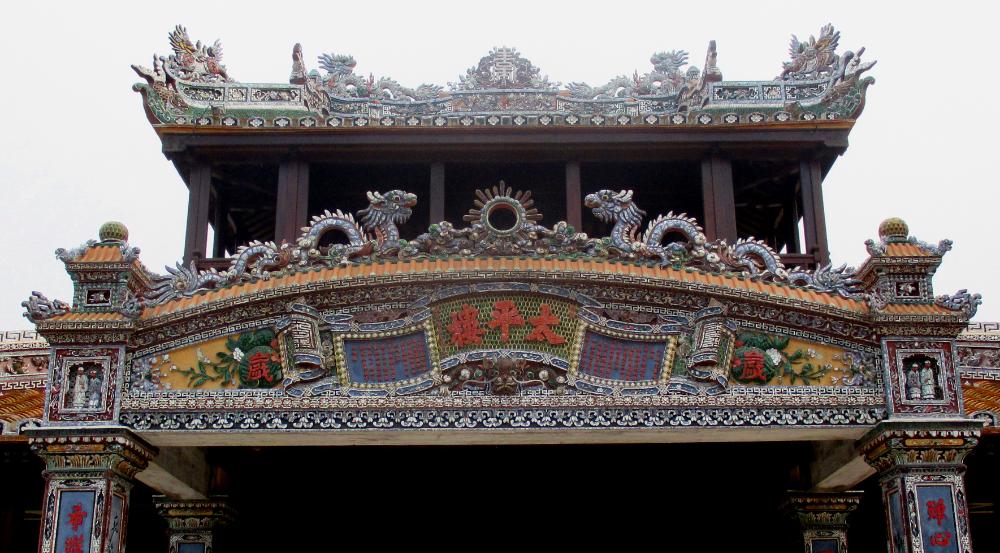
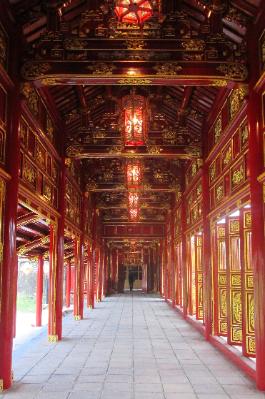
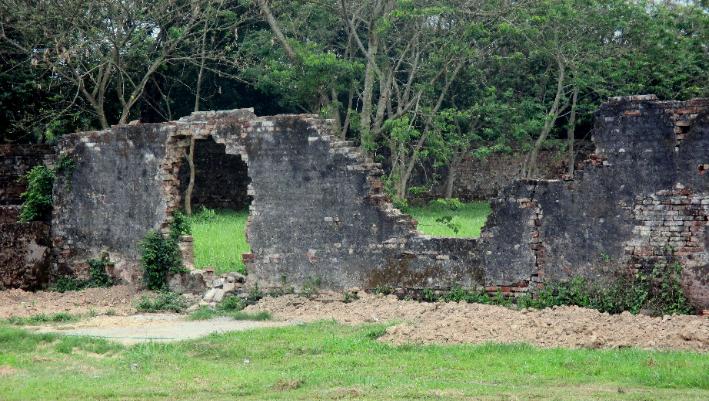

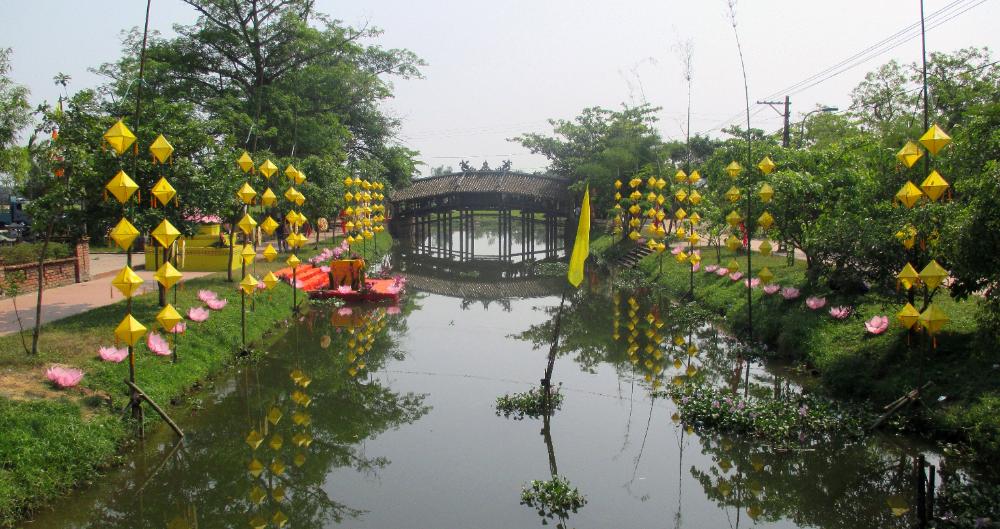
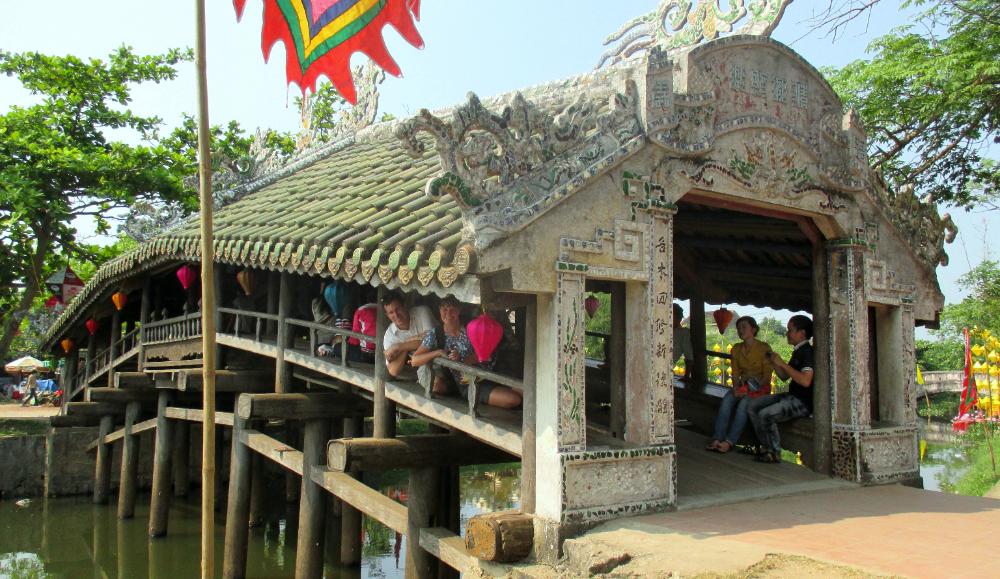
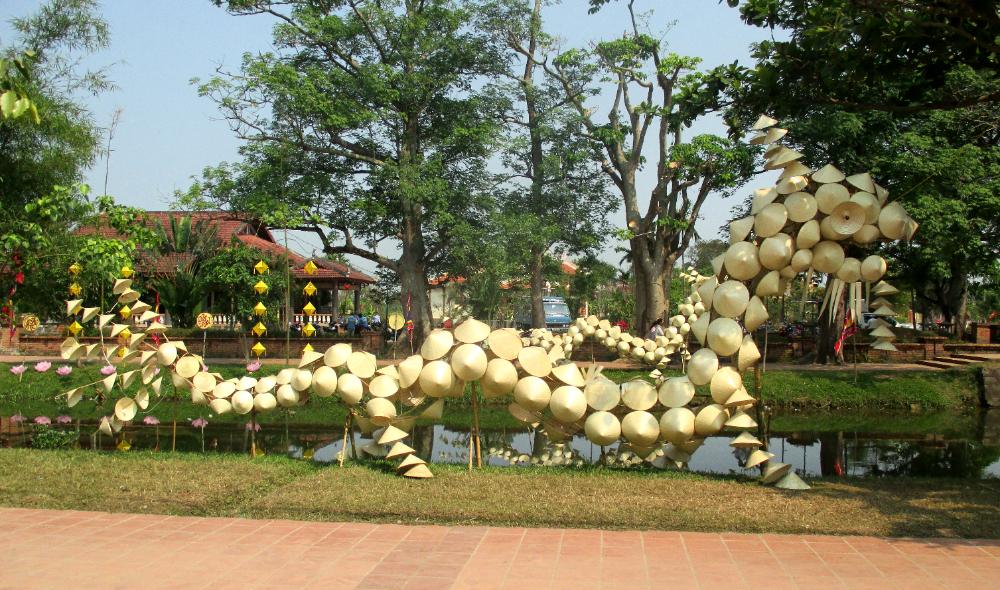
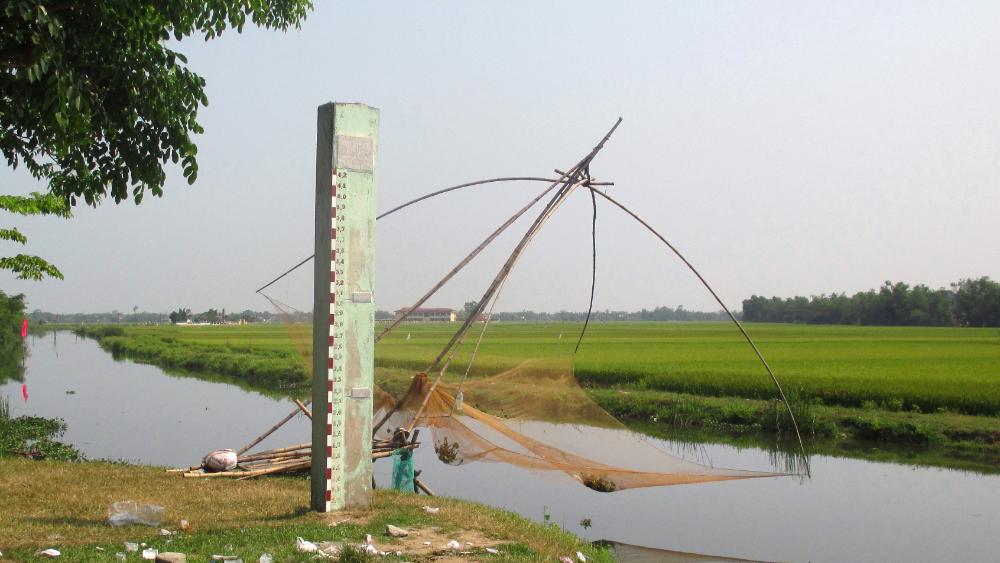
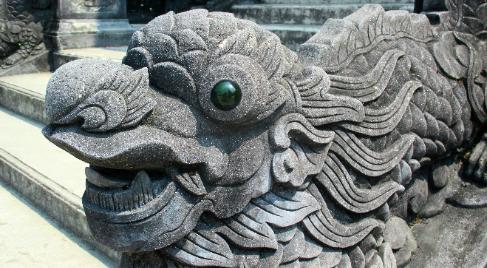
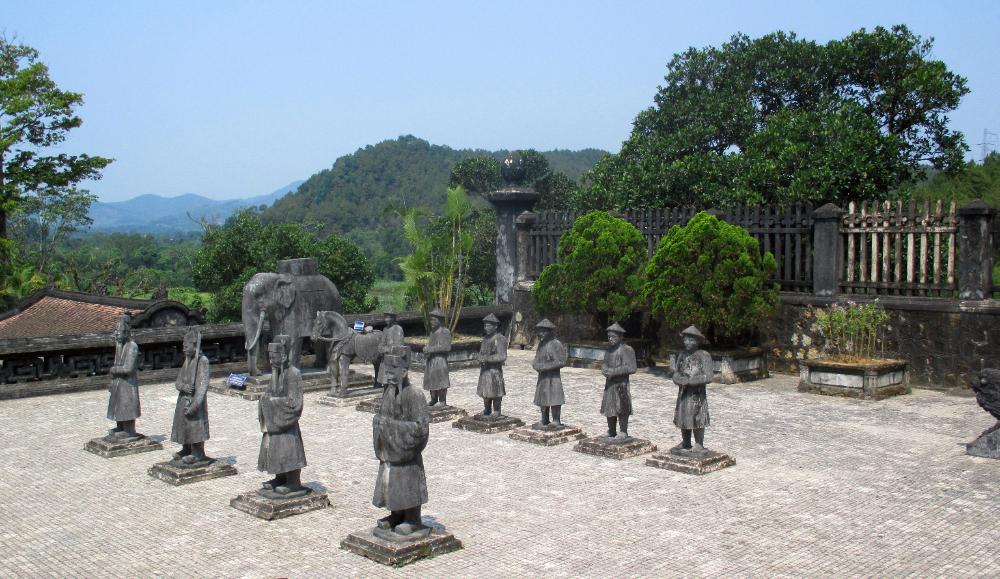
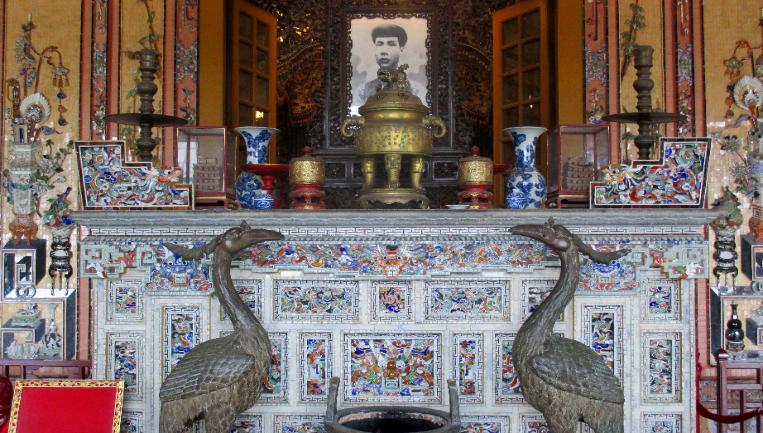
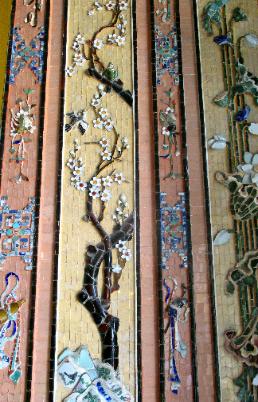
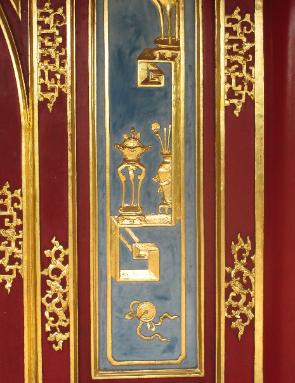
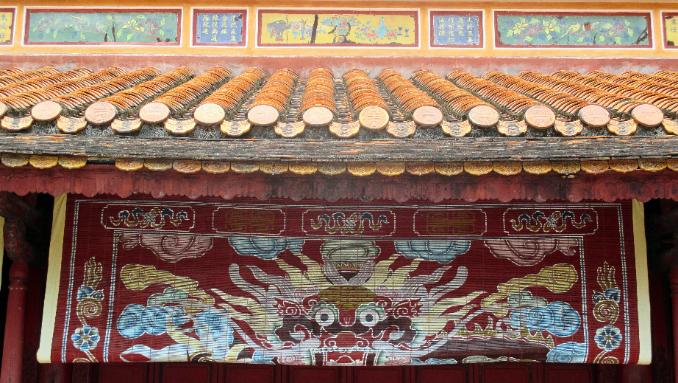
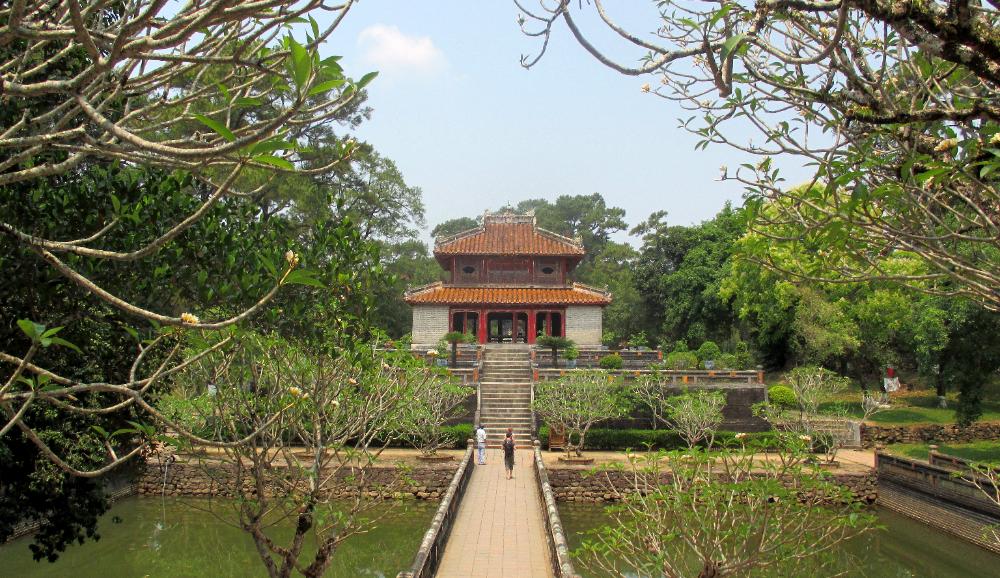
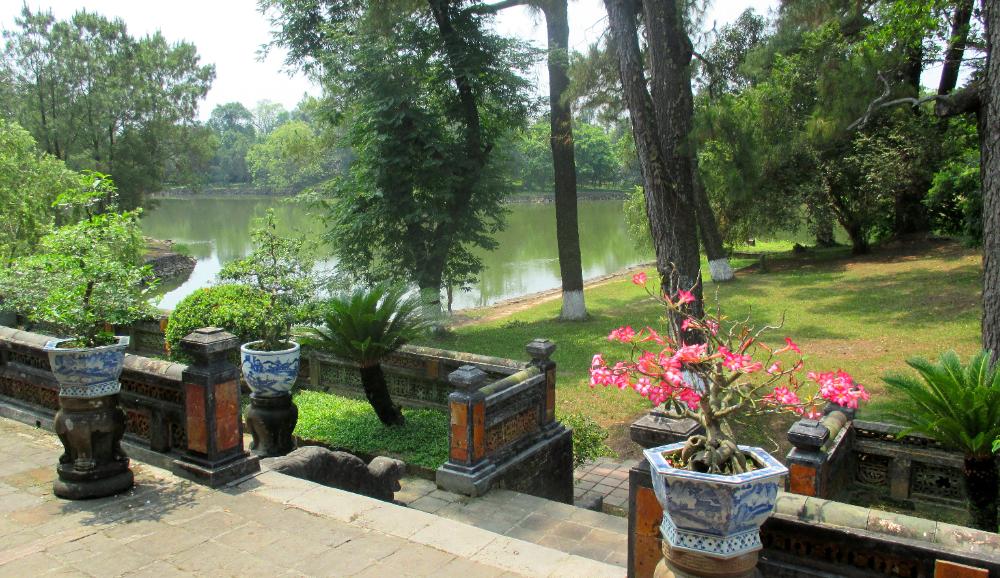
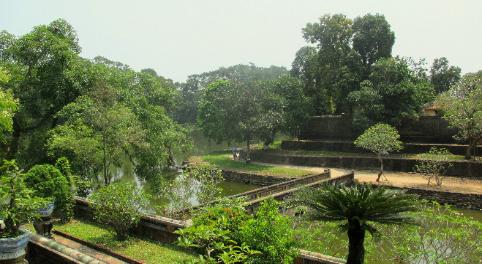
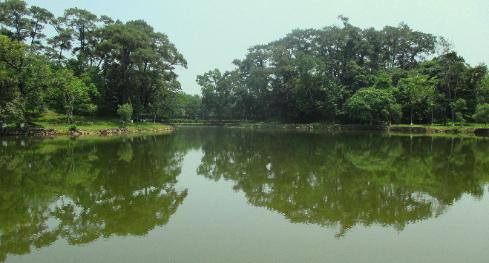
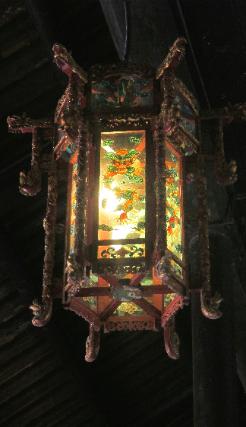
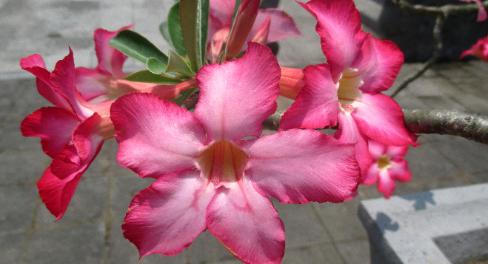
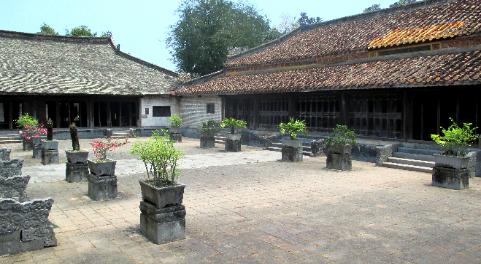
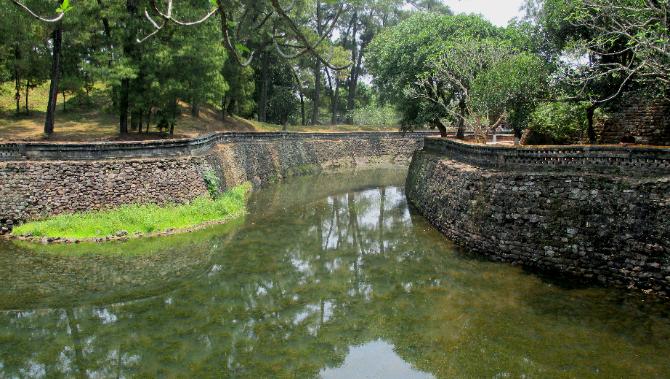
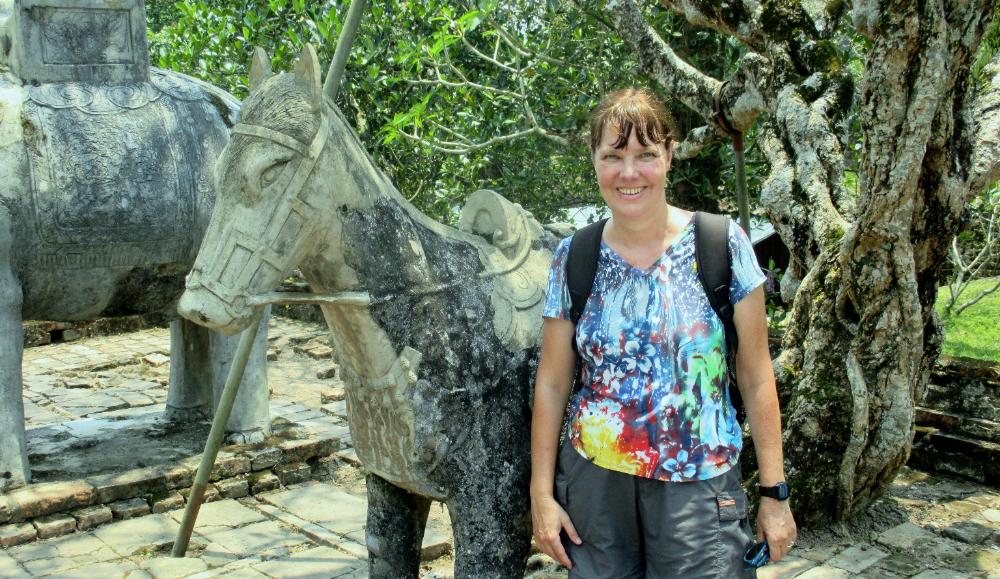
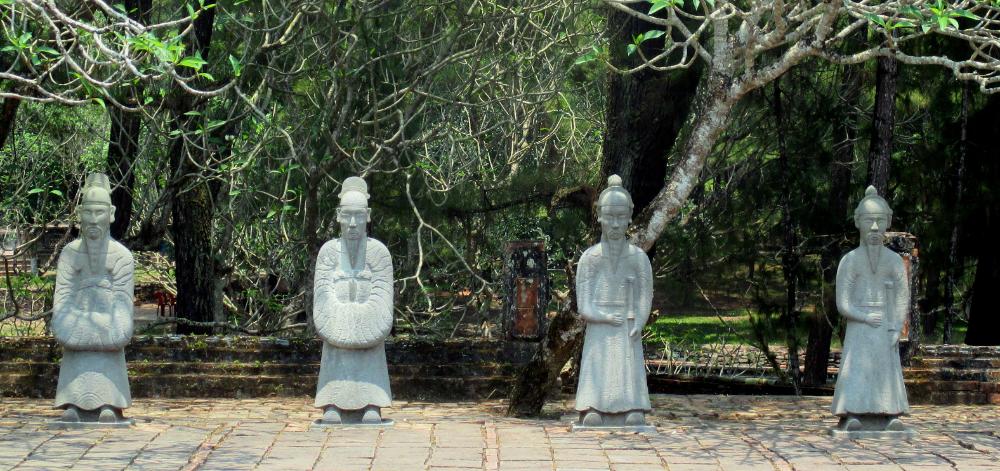

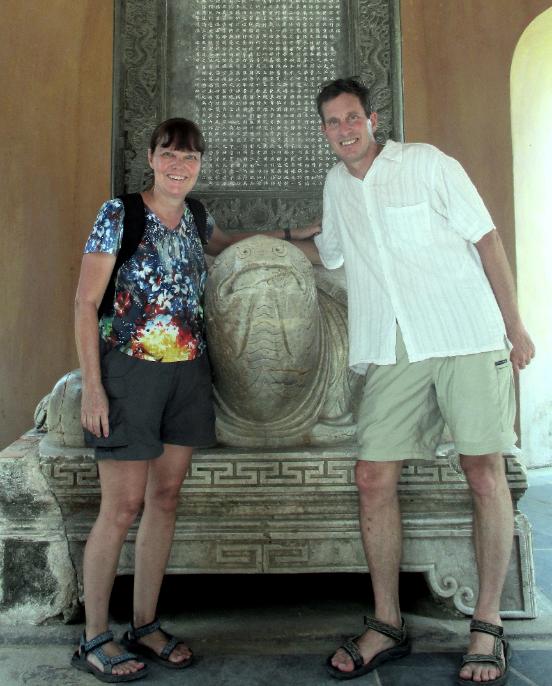
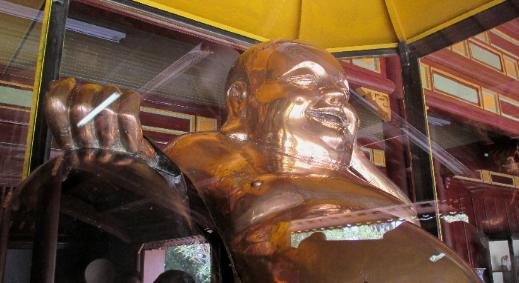
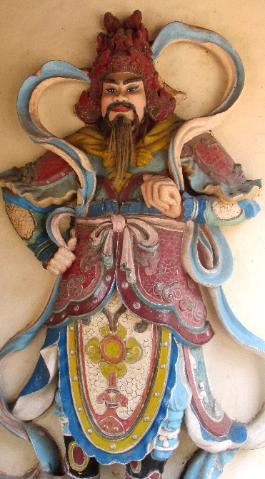
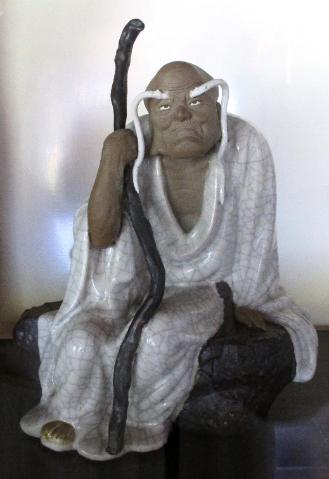
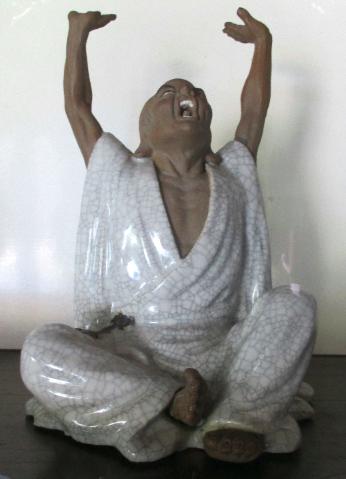
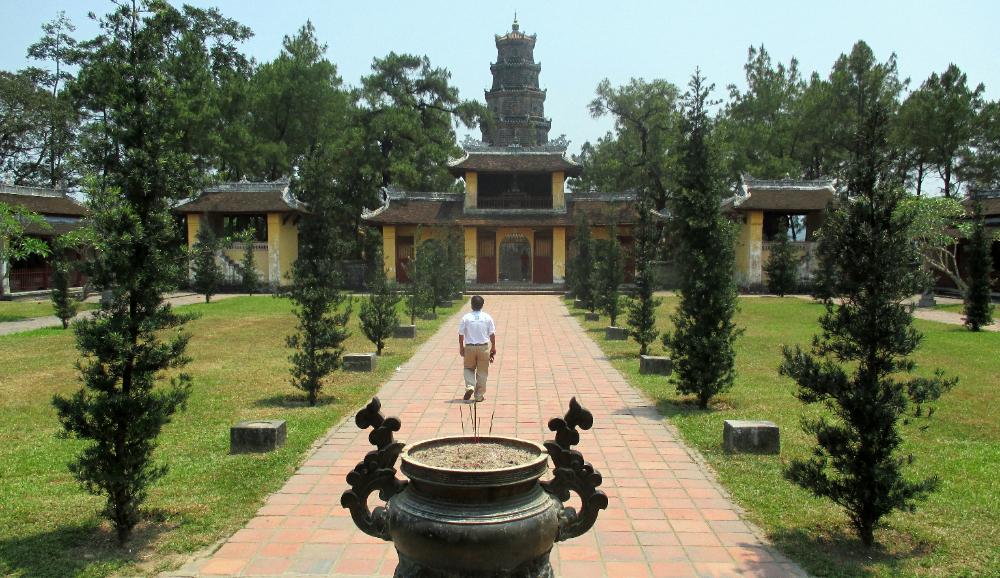
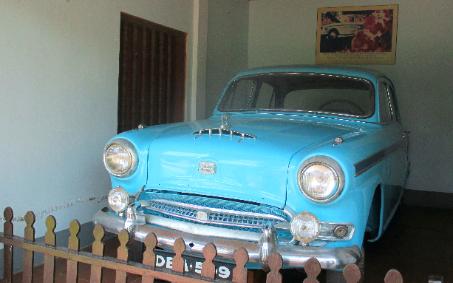
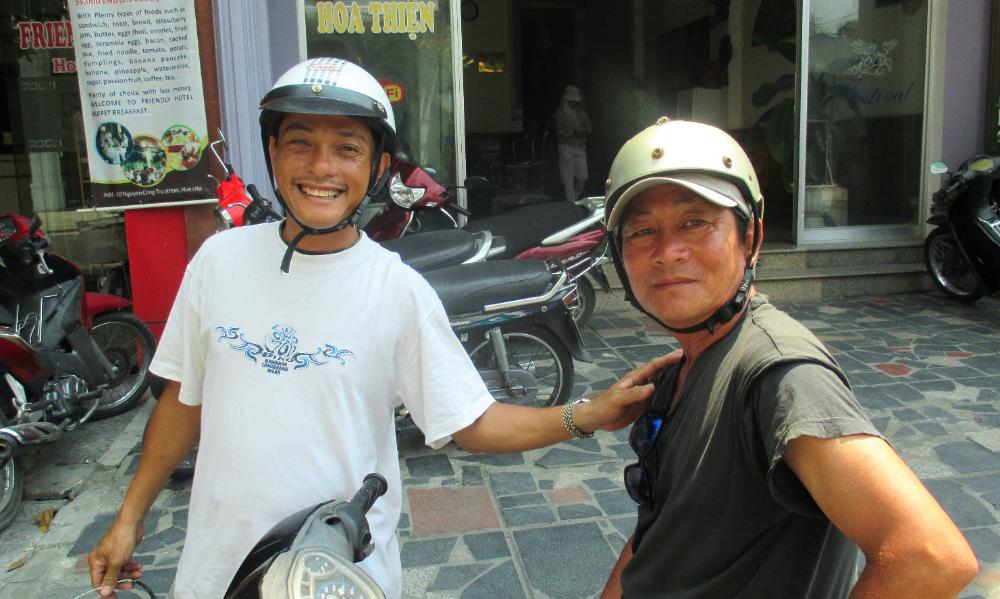
| The royal tomb for Minh Mang is actually more like a symmetrical series of pavilions and gateways set in a gorgeous landscaped park than a tomb as we might think of it |
| Hue, Vietnam |
Hue (pronounced hway) sits near the midpoint
of Vietnam and was the imperial capital for 143
years from 1802 to 1945. When we arrived by
overnight train, we noticed it felt hotter than it
had in the north, but a cool breeze wafting off
the Perfume River kept things bearable. After
getting settled, we walked through sculpture-
filled parks along the river to the Citadel -- the
royal residence of emperors. The immense
walled complex surrounded by a moat was
designed to repulse invaders as well as serve
as a royal city forbidden to commoners.
Visiting the Citadel is one of the must-do's in
Hue. The other is seeing the royal mausoleums
of the emperors situated along the Perfume
River. This makes for an excellent day trip. We
paid $10 each for a motorcycle tour of the three
most celebrated tombs -- those for Minh Mang,
Tu Duc, and Khai Dinh -- along with a few other
sites and thoroughly enjoyed the experience.
of Vietnam and was the imperial capital for 143
years from 1802 to 1945. When we arrived by
overnight train, we noticed it felt hotter than it
had in the north, but a cool breeze wafting off
the Perfume River kept things bearable. After
getting settled, we walked through sculpture-
filled parks along the river to the Citadel -- the
royal residence of emperors. The immense
walled complex surrounded by a moat was
designed to repulse invaders as well as serve
as a royal city forbidden to commoners.
Visiting the Citadel is one of the must-do's in
Hue. The other is seeing the royal mausoleums
of the emperors situated along the Perfume
River. This makes for an excellent day trip. We
paid $10 each for a motorcycle tour of the three
most celebrated tombs -- those for Minh Mang,
Tu Duc, and Khai Dinh -- along with a few other
sites and thoroughly enjoyed the experience.
| The tile-roofed bridge was built in 1776 |
| We loved this dragon made out of conical Vietnamese hats |
| Nearby, a fishing net stands ready to be dipped into the river. A flood marker shows the extremely high flood levels in 1999. |
| Certain elements are present at all the tombs, like these mandarin and animal statues |
| Dragons are everywhere, some with playful green- glass eyes and others with fierce curlicue whiskers |
| Last up was the elaborate mausoleum of Khai Dinh, the second-to-last Nguyen emperor (1916-1925) |
| The outer monuments are stark, but the palace itself is a baroque extravaganza |
| We liked the palace precisely because it was so over-the-top -- plus we're suckers for glass mosaic tiles |
| Khai Dinh was deeply unpopular with his own people. He taxed them heavily to finance the construction of his tomb and lived in luxury while his people suffered under the French. |
| Minh Mang was the second Nguyen emperor (1820-1841). He was a capable ruler and a staunch Confucian who didn’t look too favorably on the French. There’s a nice symmetry to his buildings and grounds and a subdued elegance to the architecture. |
| The Minh Mang site was serene and almost deserted when we visited – a surprise given how lovely this regal tomb is |
| The grounds were gorgeous, with frangipani trees and water views from the pavilion sites |
| The harmony and balance of architecture and landscaping made this our favorite royal tomb |
| The complete lack of traffic noise made this one of the most peaceful places we visited. |
| Tu Duc was emperor shortly after Minh Mang (1847-1883). He reigned for 35 years and was even less of a fan of the growing influence of the French. |
| Tu Duc reigned longer than any other Nguyen emperor. He liked poetry and nature and moved into his own tomb site for the last 16 years of his life -- which sounds creepy, but not with tombs like these. Despite having some 200 concubines, he died childless due to smallpox, which rendered him infertile. |
| We found the buildings and courtyards understated and simple, but with bright swatches of color here and there |
| A serpentine stone-lined waterway winds through the lovingly landscaped grounds |
| By this time we were wilting in the midday heat but determined to press on to the last of the three major tombs |
| Mandarins (high civil servants) stand ready for the emperor's command |
| This is the Tiger Arena (Ho Quyen). Here fights to the death were arranged between tigers and elephants for the amusement of the emperor. Built in 1830 during the reign of Minh Mang, it was the only such coliseum in all of Southeast Asia. It's said that the emperor eventually fixed the fights, having the tigers’ claws and fangs removed to make sure the elephants won. Why? Because elephants symbolized the monarchy and tigers symbolized rebellion! |
| Our final stop was the seven-story Thien Mu Pagoda -- the tallest in Vietnam. Built in 1601, it's one of Hue's most recognizable landmarks. The site is free to enter and only 3 km from Hue. |
| Also housed here is the Austin auto used by Quang Duc when he set himself on fire in Saigon in 1963 to protest the crackdown on Buddhists |
| As if to counterbalance the laughing Buddha are these smaller statues of frowning and angry monks |
| The pagoda stands on a hill and the grounds are beautiful |
| Especially lovely are these delicate flowers growing in a lily pond |
| We say goodbye to our two amiable motorcycle drivers as they drop us off at our hotel after a fun outing |
| Hue sits on the banks of the Perfume River. We enjoyed walking through the green parks with sculptures that border the river on either side. |
| Two of our favorite Hue sculptures |
| We crossed this bridge to the north bank of the Perfume River and continued walking to the Citadel |
| The Citadel was built by the first Nguyen emperor, Gia Long, beginning in 1804. It’s an immense walled complex surrounded by a moat, so it was clearly meant to repulse invaders. |
| This is one of the imposing entrance gates to the imperial city |
| The Royal Reading Room (Thai Binh Lau) is the only building to survive both the French reoccupation and American bombs |
| The Citadel has a perimeter of almost 2½ km, so there is plenty of room inside the walls for gardens, palaces, libraries, temples, pavilions, ceremonial halls, and more |
| Impressive ceramic decorations cover Thai Bin Lau, where emperors would read books and write letters |
| Unfortunately most of the original buildings were destroyed during the Vietnam War |
| The Mandarin Buildings once served as offices for the emperor's most trusted civil servants |
| A Vietnamese woman pays her respects in front of To Mieu Temple |
| This colorful demon keeps his eyes on you as you exit the Citadel |
| This friendly fellow and his brother offered to take us on a tour of the royal tombs and other key sites for $10 each |
| We drove out into the countryside, past green rice paddies and farmers in conical hats, past flocks of quacking ducks paddling in irrigation ditches, and past the Perfume River and several of its tributaries |
| Our first stop, about 6 km from Hue, was Thanh Toan Bridge, a historic wooden bridge that crosses a canal. It was decked out in colorful decorations in celebration of the Hue festival. |
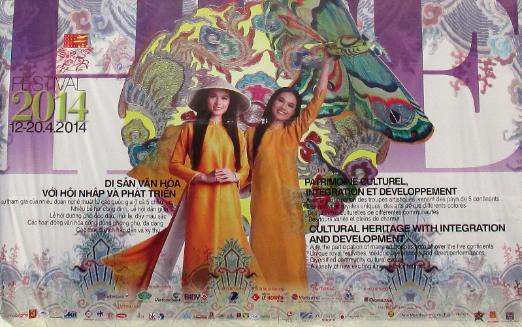
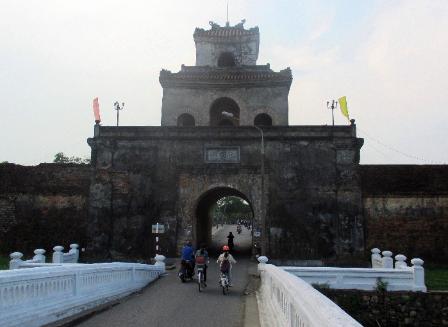
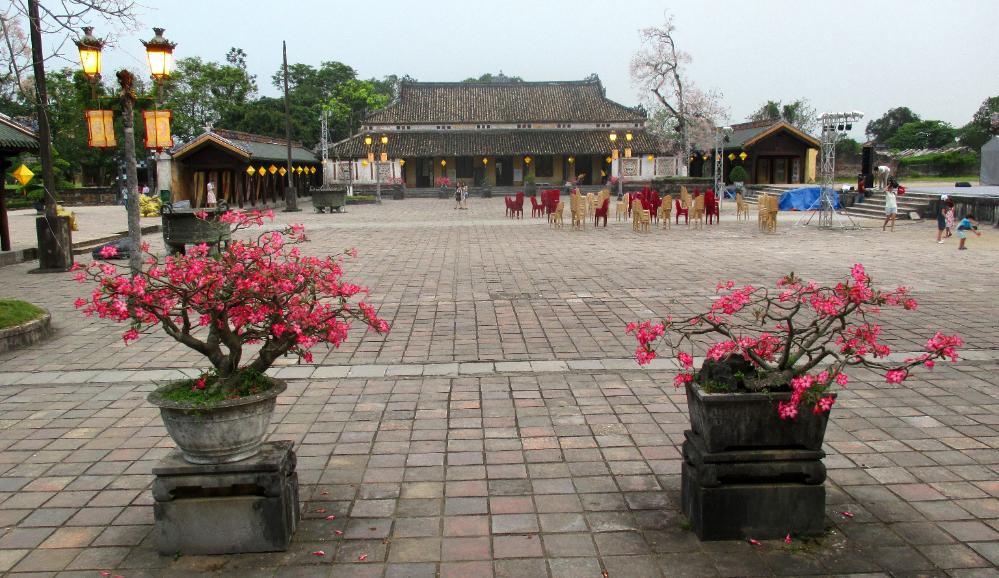
| This large central courtyard, once a gathering place for the emperor and his civil servants |
| The Citadel |
| Motorcycle Tour |
| Khai Dinh Tomb |
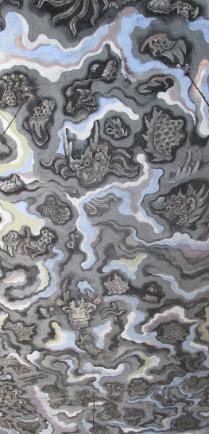
| Minh Mang Tomb |
| Tu Duc Tomb |
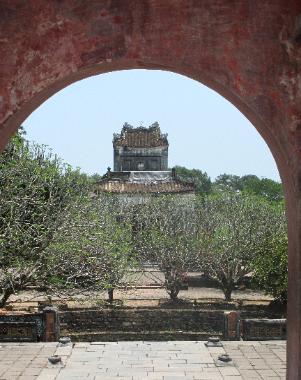
| Tiger Arena & Thien Mu Pagoda |
| Note: A 12-hour overnight train ride took us from Tam Coc (near Hanoi) to Hue -- and Hue is still only in central Vietnam near the old dividing line between north and south. It makes you realize just how long and narrow this country is. We're talking over 3,000 km (2,000 miles) of coastline along the South China Sea. |
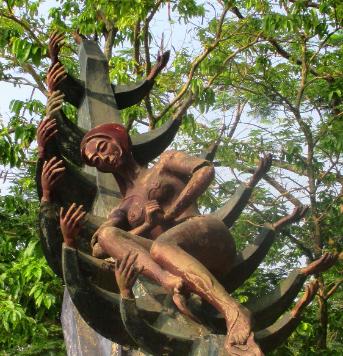
| Everywhere we went we saw signs for the Hue Arts Festival, large parts of which took place inside the Citadel itself |
| Parts of the Citadel feel like a smaller version of the Forbidden City in Beijing |
| Nine Dynastic Urns honor the Nguyen emperors at the To Mieu Temple |
| At each tomb we were given an entry ticket. The cost for each tomb was $4 (80,000 dong) per person. |
| Inside a pavilion at the far end is a large golden statue of a laughing Buddha |